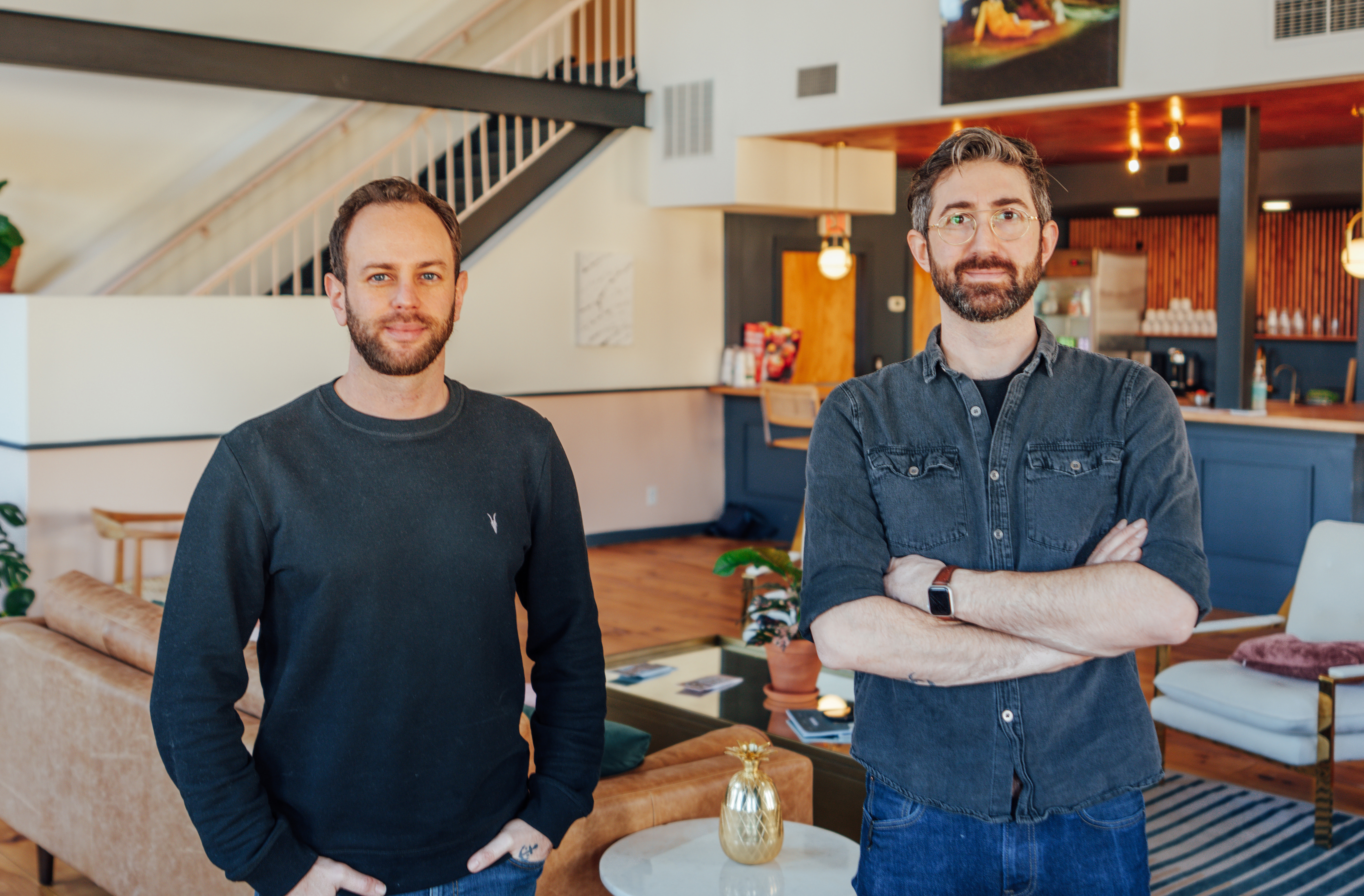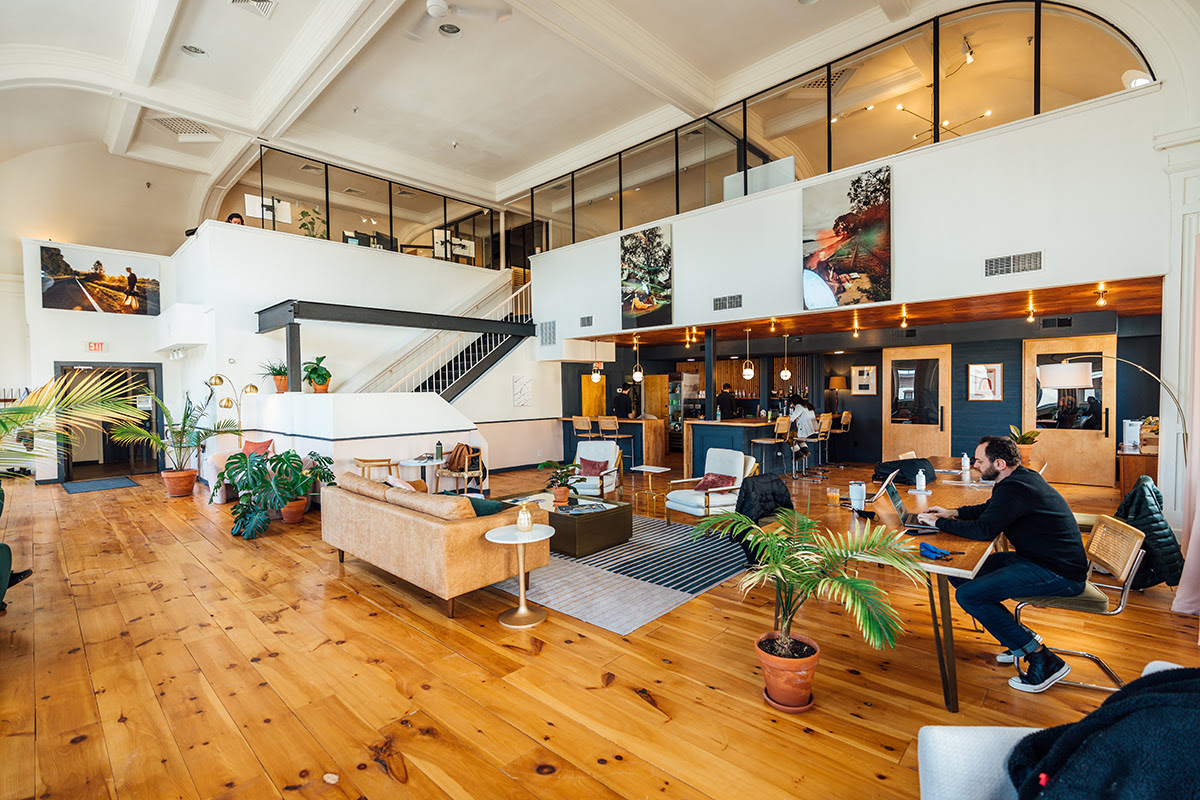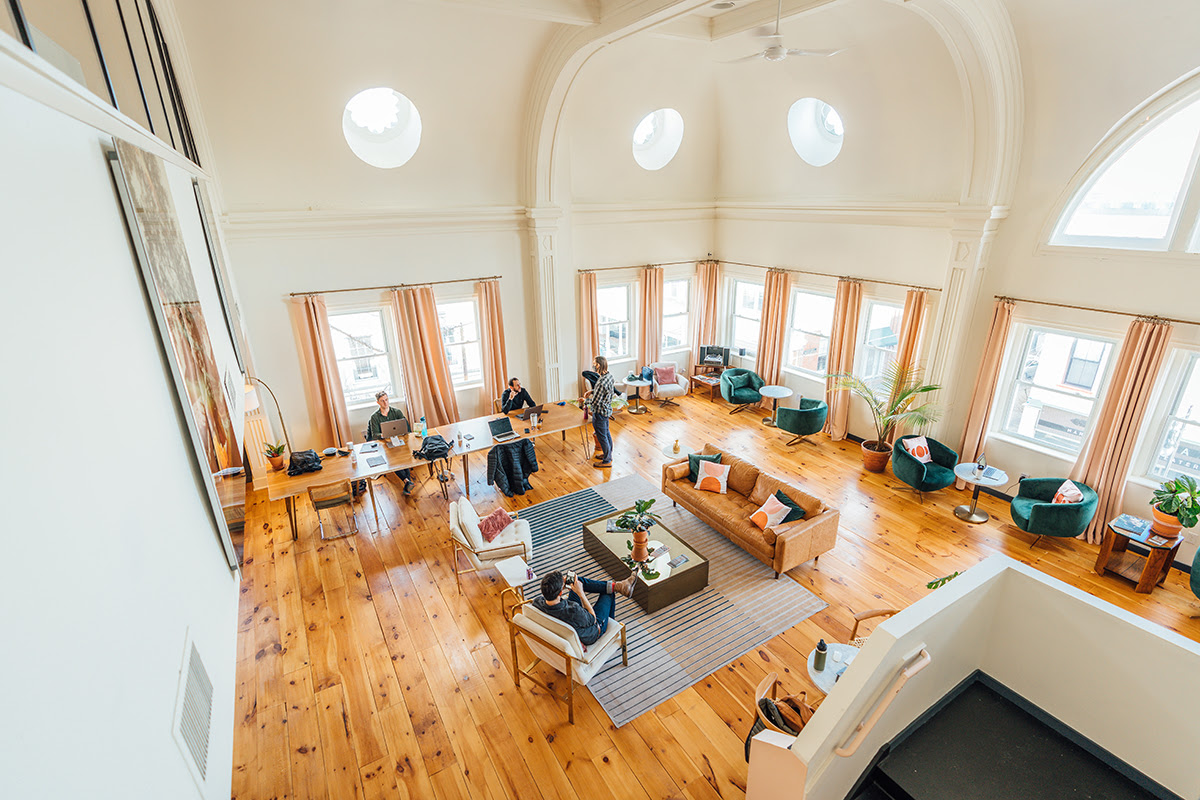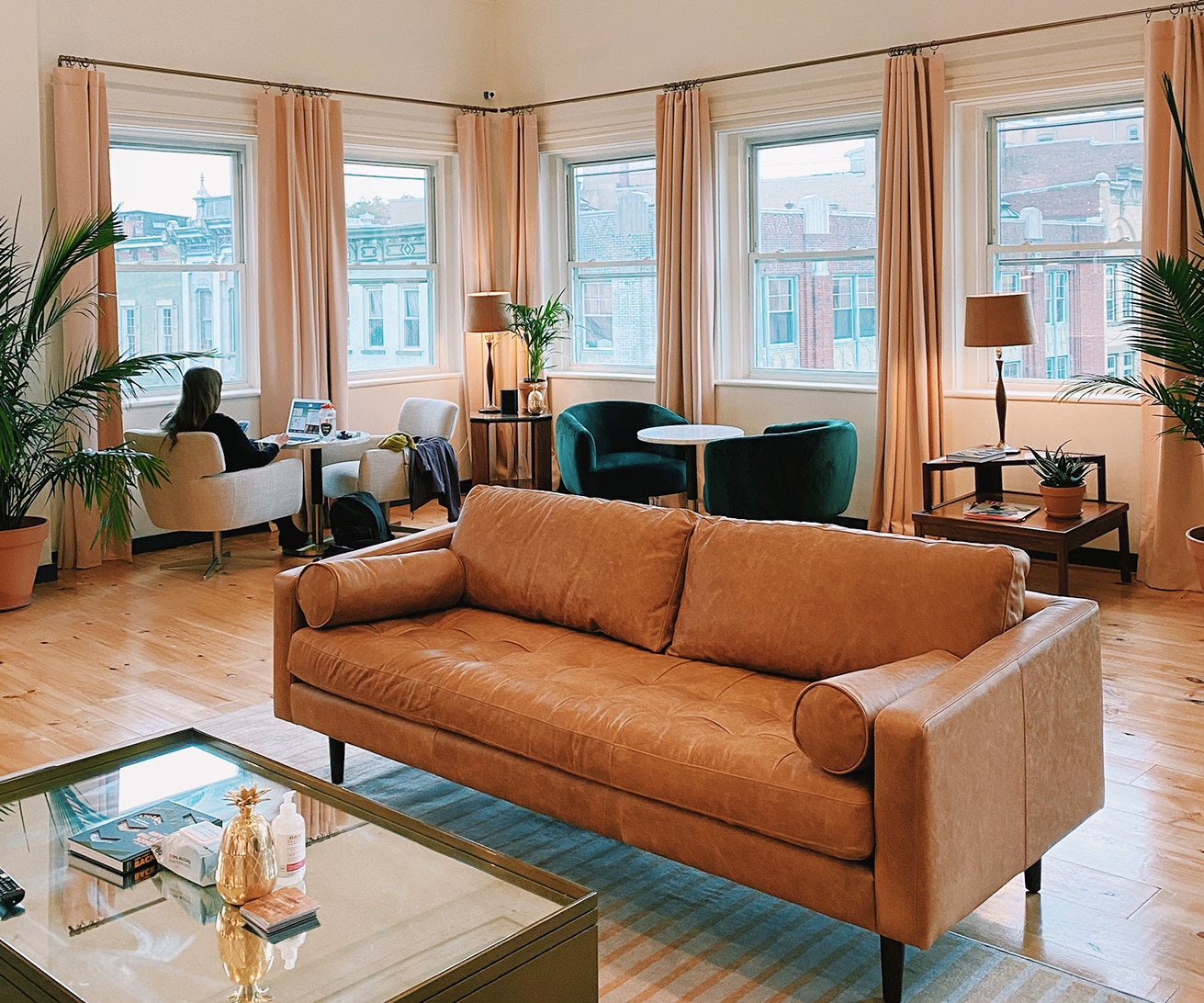By S. Mitra Kalita
What do you get when you cross the growth in the second-home market with the explosion of remote work?
A company called Barnfox is trying to capitalize on the answer. The operator of work-retreat spaces, inspired by the distinct designs of Soho House, a chain of members-only clubs, hotels and restaurant bars around the world, has just set up its fourth location — in Manhattan. That’s a departure from its first three venues, all in the Catskills and Hudson Valley. Our publisher S. Mitra Kalita caught up with co-founder and CEO Frederick Pikovsky. Edited excerpts:

EH: Your business seems to invert the notion of a second home by creating a second workplace. Tell me about that.
Frederick Pikovsky: That’s an interesting way to look at it because home has almost become like the first workplace now. The home has replaced the traditional office for a lot of people over the last few years.
Now with going back to work, most people want to still be able to work from home. From an employer standpoint, I don’t want to have these big commercial leases if they’re going to be underutilized. So the middle ground is for the employer: I want to spend less money on office space, but I still want to be able to meet with my employees.
You still need to be able to go out of your house to be able to work. That’s our solution. We provide a very flexible workspace solution: you’re not signing a lease, you’re signing a subscription.
EH: The spaces don’t look like workspaces though. Tell me about that.
FP: We took a page out of the Soho House playbook, where it’s like very beautiful chic-design social spaces. They created this level of exclusivity.
People want to be part of these really beautiful spaces, but you don’t get that as a workspace. We realized the future design of a workspace should feel like a social club. The design of a social space with the functionality of a workspace is what we’re going for. And then depending on where the location is, try to find inspiration from the environment to inform the design itself.
For example, our Livingston Manor location looks totally different from other locations because that area is way more mountainous and rural and people are into cabin and rustic vibes.
A lot of people will come into our spaces and say there’s this sense of warmth and positive vibe from just walking in. That’s what we’re aiming for.
EH: Your location is what prompted me to talk to you: you’re in Hudson Valley, the Catskills. What is the appeal of second-home markets for office space?
FP: The core of the entire business is an excuse for me to be a camp counselor. I want to spend time away from the city. I was spending time away from the city and just going upstate for fun.
Remote work seemed to be the thing that was going to happen anyway before Covid. Hudson and the Hudson Valley seemed like the perfect place to start because it’s within two hours of New York City, you can get here on a train. You can live in the city, but still come to Barnfox. The big vision is that we can be anywhere: on a beach, in the desert, all these places to escape.

EH: Are the clientele second homeowners, people who are there for the weekend and want this extra space?
FP: We figured a certain amount of people who live here will use it. There’s going to be a certain amount of people that have weekend homes that will use it when they’re here.
And then the third and bigger segment we hoped was to attract companies or freelancers to use us as a hybrid getaway. People were already renting Airbnbs just to like work away from where they’re based. It would become more like this lifestyle thing that you buy into.
Since Covid, we’ve had a lot more people move up here. People who live here are using the space on a daily basis and it has grown way more than we would’ve expected, pre-Covid. And of course, companies are moving into more of a remote hybrid model.
Barnfox went from a luxurious idea to a very obvious idea.
EH: How much does a Barnfox membership cost?
FP: There are a variety of memberships. The resident membership, which comes with unlimited visits to Barnfox, is $325 per month or $2,500 per year, while the “away” tier allows people to come any 14 days out of the year for $495 or 36 days for $995.
EH: How long ago did you open?
FP: We opened the first Hudson location literally two weeks before everybody was told to stay home.
EH: This was pre-Covid.
FP: Yeah. We started working on this idea around 2017.
EH: Did you shut down, did you become a haven or …?
FP: We became a haven, but we had to limit. In March, April 2020, people were told to stay home. And yet we had all of a sudden, all these people retreating from the city, long-term Airbnbs or the weekend homeowners that all of a sudden are living upstate full time, and needing some place to get outside of their house.
We started getting a lot of people applying for membership. Then it was just a matter of how do we navigate people in a space when you’re supposed to stay home. We have very big restrictions, like five people in this really big space that were like 20 feet apart. And it was all scheduling ahead of time. But that was how badly people wanted to be able to have a space inside of their house.
In a way we were kind of living our best life during the pandemic. It’s terrible to say, but we felt really grateful that we felt more safe. It felt a healthier environment to be upstate versus in the city during that time. And at a time when everybody was stuck at home, we at least had this social community at Barnfox where we were able to just say hi to somebody else every single day and have a conversation.
It just made us have to think bigger.

EH: So confession: I am a former Soho House member. I discontinued my membership in the pandemic. I looked back into rejoining and I realized my needs are just different now and that I couldn’t lose time commuting somewhere and my days are filled with Zoom meetings. And I couldn’t justify the price.
I am wondering if you can distinguish Barnfox from all the things out there now, Soho House to The Wing to Ethel’s Club to …
FP: The core of what Barnfox does is it’s a lifestyle to support the ability to work and travel from wherever they want.
The feedback I get on Soho House is that it’s not necessarily the type of culture where they try to … like if you walk into a Barnfox, and I get to know you, I’m going to connect you to like five other people. It’s very much like I said a camp-counselor mentality. Soho House, it’s more about like everybody’s a celebrity and everybody wants their privacy certified. I love their design though. So we took the exclusivity and the design, took it one notch down to make it a little bit more relaxed. And, the culture is way more about we want everybody to get to know everybody.
EH: Is there something you do to create that sense of community? Events, ice breakers?
FP: People may look at this the wrong way as we interview every applicant. We don’t interview them to say no or that your status isn’t great enough. We literally interview everybody so that it gets the community manager to get to know everybody on a deeper level.
What are your interests? What do you like doing? What kind of work do you do?
A community manager for every location can get to know the hundreds of people that go in and out of there and be able to say “Jason likes rock climbing, Lauren loves rock climbing. I’ll connect you two.”
Nobody’s too cool for anybody here.
EH: What’s the business model? Did you buy the buildings you’re in and what’s funding the expansion?
FP: We had a strategic investor to start off, a hospitality company in upstate New York and Catskills that owns a handful of hotels and restaurants. We pitched them and said if you help invest in these workspaces, that would drive retreats during the week and help drive businesses to your hotels Monday through Thursdays, when they’re hurting. They gave us an initial investment to build these three prototype locations.
We look at ourselves as operators. Barnfox is a brand and we’re an operator. We have no intention of being real estate owners.
During the pandemic, we obviously went through a tumultuous financial crisis. We’ve had a lot to learn from WeWork’s mistakes. We operate in a totally different way than WeWork. At our core are questions like why are we doing this? What makes us great? Why do people love us? You grow to fill the market opportunity, not to dilute the experience.
During Covid, what we learned was about a business model completely built on operating agreements. They don’t pay a lease but do a profit sharing with the landlords. You’re sharing the gains and losses.
So during Covid, they weren’t paying a lease but they were staying afloat. That’s the future of this model, to focus on operating agreements. We have to establish ourselves and we are working on opening the next set of Barnfox locations purely on operating agreements.
EH: Have you raised more money or is the company’s sustainability based on the subscription model? Or both?
FP: So we’re actually at a point of sustaining ourselves. But we’re definitely in fundraising mode right now to accelerate our growth. The more desirable locations we have, the more value there is to your membership, right?

EH: What markets are next? For our Escape Home readers, what parts of the second-home spots feel hot?
FP: I hope I’m not giving away the entire playbook, but the way we’ve strategized is you begin first in these desirable retreat destinations a few hours within a big city hub. We have to start with what’s at the core of our business, these getaway destinations. It becomes more organic growth where we start to build with these members who are either visiting these places or part time, or even living there full time.
Then once we’ve built that up, you go into the hub of the city and start to grow within the hub of the city. We create this hub-and-spoke network of locations for every major city.
EH: The growth of second homes on the West Coast and the Midwest has been pretty notable.
FP: There’s a list of criteria. Where are people moving, where are the most amount of remote workers, what’s the population, household income growth. The next few markets we’re looking at are San Francisco, L.A., Austin, [Texas].
And then the retreat destinations mean you can start going into places like Jackson Hole, [Wyoming] or places in Colorado. Colorado is a big one.
EH: What has surprised you about this type of work, a few years in?
FP: It just surprises me personally how involved in a real estate business I’m in now. What I did before in my 20s, I was insanely passionate about backpacking and creating something that would inspire more young people to travel the world. I was on a broke-ass budget. So I started a travel media company.
We ended up getting six travel guide books published. They were at Urban Outfitters and had a big following. My big goal and passion in the early stages of my career was travel and inspiring young people to go travel.We wrote very edgy content, like 10 places to have sex around the world.
So travel was always part of it and entrepreneurship in general. Remote work was just always part of my life. Then before that I had a stint in culinary school and food has always been a big part of my life. All of this kind of works together now.
EH: Do the Barnfoxes have food or cafes?
FP: We’re still at an early stage, so we try to just keep everything pretty minimal. I don’t think we’ll ever operate our own house restaurants. I think we’re going to just bring in operators. We would potentially curate pop-up chefs or very cool chefs that would operate.
EH: What does Barnfox mean?
FP: The fox, first of all, thrives in a multitude of terrains and environments. They’re fun and frisky and wild animals. That’s a fun way to think of what we are and the members of Barnfox. The idea of the barn is being within a shelter … just a barn full of foxes.

